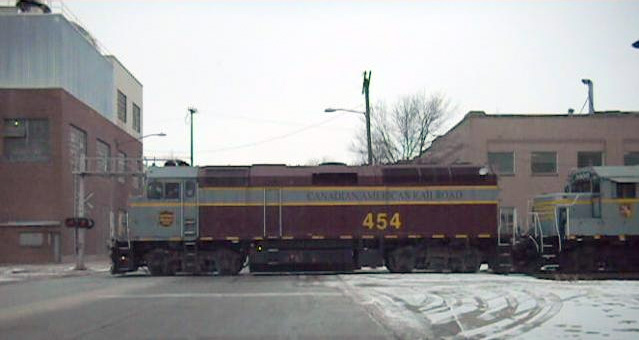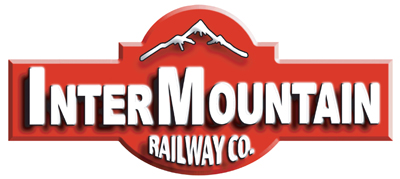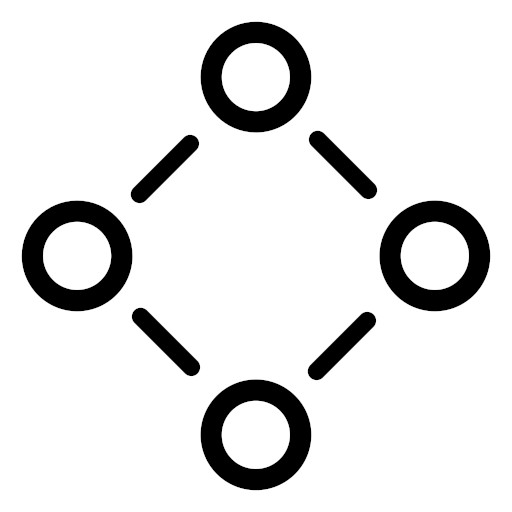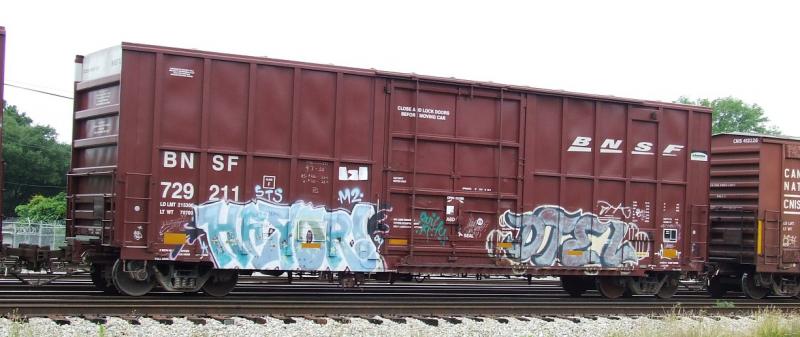Prototype History: While the 40-foot boxcar was a standard design, and it did come in different setups depending on the type of freight being transported, it was not large enough for efficient mass commodity transportation. The 50-foot boxcar made its first appearance in the 1930s and steadily grew in popularity over the years, which further improved redundancies by allowing for even more space within a given car. Today, the 50-footer remains the common boxcar size. After the second world war ended, and steel became once again readily available, steel became the go-to choice for construction of boxcars. Pullman Standard and ACF were some of the most prolific builders of these cars.
In the 1960s, the flush, "plug" style sliding door was introduced as an option that provides a larger door to ease loading and unloading of certain commodities. The tight-fitting doors are better insulated and allow a car's interior to be maintained at a more even temperature.
The 50 foot hi-cube boxcar fleet is similar to a 50 foot standard car with an additional 2 feet of interior height. This is known as a "Plate F" boxcar. 50 foot Hi-Cube boxcars typically have a load capacity of 100 tons and are equipped with cushion underframes and plug doors. These cars are used primarily in rolled paper service as the extra height is needed to accommodate the larger rolls that are now commonplace. They can also be used for similar commodities handled in other 50’ or 60’ boxcars.
In the 1960s, the flush, "plug" style sliding door was introduced as an option that provides a larger door to ease loading and unloading of certain commodities. The tight-fitting doors are better insulated and allow a car's interior to be maintained at a more even temperature.
The 50 foot hi-cube boxcar fleet is similar to a 50 foot standard car with an additional 2 feet of interior height. This is known as a "Plate F" boxcar. 50 foot Hi-Cube boxcars typically have a load capacity of 100 tons and are equipped with cushion underframes and plug doors. These cars are used primarily in rolled paper service as the extra height is needed to accommodate the larger rolls that are now commonplace. They can also be used for similar commodities handled in other 50’ or 60’ boxcars.
Road Name History:  CDAC was born from the 1995 breakup of CP Rails “Canadian Atlantic Railway” business unit. Iron Road Railways (who owned Bangor & Aroostook) bought the line from Brownville Junction, Maine (on the BAR) to Montreal, Quebec. The western end of the line from Lennoxville, Quebec to Montreal became the Quebec Southern while the rest became the Canadian American Railroad.
CDAC was born from the 1995 breakup of CP Rails “Canadian Atlantic Railway” business unit. Iron Road Railways (who owned Bangor & Aroostook) bought the line from Brownville Junction, Maine (on the BAR) to Montreal, Quebec. The western end of the line from Lennoxville, Quebec to Montreal became the Quebec Southern while the rest became the Canadian American Railroad.
CDAC adopted a paint scheme reminiscent of Canadian Pacific’s pre-1967 scheme. In addition to a small fleet of EMD/GMD GP units, CDAC acquired a handful of ex-Amtrak F40PHs which they used for freight service. Alas, parent company Iron Road Railways ran into trouble and declared bankruptcy in 2002. During the reorganization, according to some reports, CDAC was merged into Bangor & Aroostook. In 2003, All Iron Road Railways lines were purchased by Ed Burkhardt’s Rail World and merged to become the ill-fated Montreal Maine & Atlantic Railroad.

CDAC adopted a paint scheme reminiscent of Canadian Pacific’s pre-1967 scheme. In addition to a small fleet of EMD/GMD GP units, CDAC acquired a handful of ex-Amtrak F40PHs which they used for freight service. Alas, parent company Iron Road Railways ran into trouble and declared bankruptcy in 2002. During the reorganization, according to some reports, CDAC was merged into Bangor & Aroostook. In 2003, All Iron Road Railways lines were purchased by Ed Burkhardt’s Rail World and merged to become the ill-fated Montreal Maine & Atlantic Railroad.
Brand/Importer Information: InterMountain was founded in 1985 by Fred Brummet. They got started in the model railroad business by producing O-Scale model kits. They got started in the N Scale business almost a decade later when in 1994 they introduced the 40-23 reefer car in kit form. Later, in 1998, they started producing RTR (Ready-to-Run) models. By the early 2000s, InterMountain phased out kit production in favor of the RTR models.
The InterMountain Railway company is located at 1224 Boston Ave in Longmont, CO. They are a manufacturer of HO, N and Z scale model trains. They have produced kits as well as RTR (Ready-To-Run) models. Their N Scale products include locomotives as well as rolling stock. Their rolling stock lineup includes Boxcars, Hoppers, Tank Cars, Reefers, Gondolas, Stock Cars and Flatcars.
Their locomotive releases have primarily been diesel units, with the one major exception being their series of AC-12 Cab Forward steam locos. Their diesel lineup includes F3's, F7's, F9's, SD40's, SD45's and FT units. They are known for quality and detail. They also release their rolling stock in larger varieties of road numbers than most of the other manufacturers.
The InterMountain Railway company is located at 1224 Boston Ave in Longmont, CO. They are a manufacturer of HO, N and Z scale model trains. They have produced kits as well as RTR (Ready-To-Run) models. Their N Scale products include locomotives as well as rolling stock. Their rolling stock lineup includes Boxcars, Hoppers, Tank Cars, Reefers, Gondolas, Stock Cars and Flatcars.
Their locomotive releases have primarily been diesel units, with the one major exception being their series of AC-12 Cab Forward steam locos. Their diesel lineup includes F3's, F7's, F9's, SD40's, SD45's and FT units. They are known for quality and detail. They also release their rolling stock in larger varieties of road numbers than most of the other manufacturers.
Item created by: CNW400 on 2024-12-15 17:43:49
If you see errors or missing data in this entry, please feel free to log in and edit it. Anyone with a Gmail account can log in instantly.
If you see errors or missing data in this entry, please feel free to log in and edit it. Anyone with a Gmail account can log in instantly.





